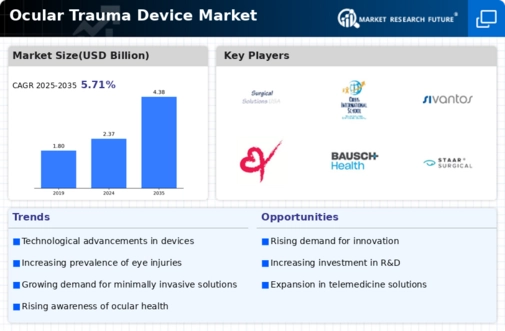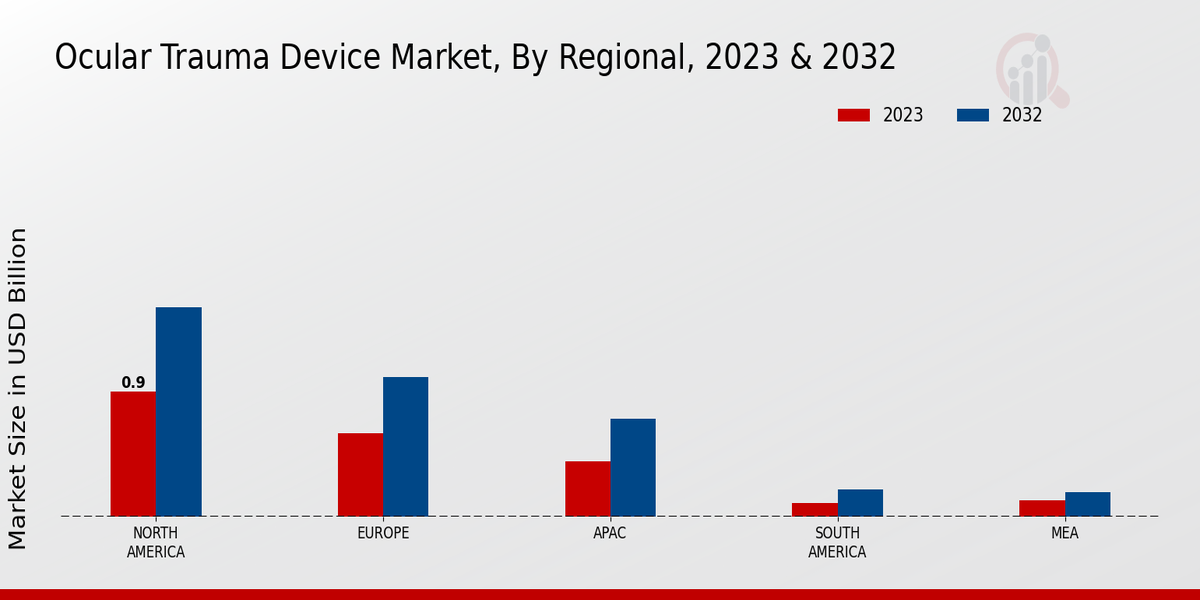The Ocular Trauma Device Market is a significant segment of the healthcare industry, focusing on the development and distribution of devices designed to treat injuries to the eye.
The competitive landscape of this market is shaped by a variety of factors, including technological advancements, increasing awareness regarding eye health, and the rising incidence of ocular trauma due to accidents, sports injuries, and combat-related incidents.
Companies operating within this market are continually innovating to introduce new products and enhance existing devices, which has led to a competitive environment where efficiency, safety, and ease of use are prioritized.
Market players are investing in research and development, aiming to improve surgical outcomes while reducing recovery times for patients. Strategies involving mergers, acquisitions, and partnerships among market participants are prevalent, allowing companies to expand their reach and strengthen their product portfolios.
Surgical Solutions has established a notable presence in the Ocular Trauma Device Market, focusing on providing advanced surgical tools that cater specifically to ocular injuries. Known for its innovative approach, Surgical Solutions excels in delivering state-of-the-art devices that meet the evolving demands of eye care professionals.
One of the key strengths of Surgical Solutions lies in its commitment to research and development, which enables the company to stay ahead of industry trends and continuously improve its offerings. The company benefits from a robust supply chain and strong relationships with healthcare providers, ensuring its products are readily available to practitioners worldwide.
Furthermore, the emphasis on training and education for medical professionals enhances the adoption of its devices, facilitating better surgical outcomes and positioning Surgical Solutions as a trusted name in ocular trauma care.
Carl Zeiss AG is a prominent player in the Ocular Trauma Device Market, recognized for its state-of-the-art imaging and diagnostic equipment that plays a critical role in the management of ocular trauma cases.
The company's comprehensive product lineup includes advanced surgical microscopes and visualization systems that enhance precision during ocular surgeries. A significant strength of Carl Zeiss AG lies in its strong research foundation, combining decades of expertise with cutting-edge technologies to develop solutions catered to the specific needs of eye surgeons.
Furthermore, Carl Zeiss AG's global footprint ensures that its products are widely available across various markets, supported by a substantial network of distribution and service facilities.
The focus on customer relationships and tailored solutions further solidifies its position as the company continually engages with healthcare professionals to refine its offerings and adapt to new challenges in the ocular trauma space.



















